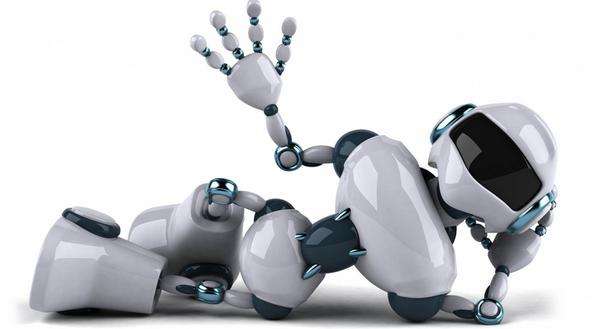A recent Etventure report, Digital Transformation 2018, emphasized that “digitalization is penetrating all aspects of our lives. It is severely disrupting the way companies operate and thus building businesses. Due to digitalization in the next few years, most companies (55%) will They need to change their business model. However, the vast majority (62%) of companies said that the knowledge and ability to manage digital is not sufficient." Robotic Process Automation (RPA) and Artificial Intelligence (AI) have transformed from science fiction to reality. According to the artificial intelligence market analysis report released by Research and Markets, the market size is growing rapidly-from a value of $641.9 million in 2017 to $58.97 billion in 2025. These figures alone illustrate the importance of adjusting company operations and the process of integrating RPA and AI. In this article, we will regard RPA as one of the major disruptors in this digital age. With the emergence of new suppliers and participants, the increase in the number of robots being implemented and the increasing demand for RPA services, the RPA market has seen inevitable growth. E.g: • Pegasystems, a software company that develops and supports customer engagement and operations solutions, acquired RPA specialist OpenSpan to enhance its own customer relationship management (CRM) application and business performance management (BPM) platform. • Information Services Group (ISG), a research, digital, procurement and management services company, has acquired Alsbridge, a procurement, automation and transformation consulting company, to increase its influence in the RPA field • More and more new RPA vendors are entering the market (such as Antworks and AutomationEdge) and are choosing to specialize by industry or function. RPA is undoubtedly becoming a more mature field, and the industry's confidence in this technology is becoming more and more obvious. • The successful initial public offering of Blue Prism (one of the largest RPA providers) proved that investors welcome RPA to the market. Since its debut on the London Stock Exchange, the share price of Blue Prism has continued to rise. • Most vendors focus on providing free trial versions (such as UiPath, AutomaTIon Anywhere), improved training platforms (including video tutorials and rich materials, structured implementation methods, RPA project quality standards (such as blue prism)) It is easier for customers to obtain RPA), and a simpler configuration interface (such as Workfusion). • We have witnessed more customers go directly to implementation pilots instead of starting their RPA journey through proof of concept (POC)/proof of value (POV)-this shows that more and more organizations are confident in the technology. • RPA is likely to be incorporated into the integrated part of large and long-term plans such as ERP, shared service centers or other large transformation projects-this is other evidence of how RPA implementation projects continue to develop. Therefore, suppliers are competing to differentiate from their competitors while adding more value to customers and the RPA field. It is best to increase the functions of the robot in the following ways: • Integrate more intelligence while allowing its software to be more accessible (and as free as possible) and user-operable. • Incorporate more advanced intelligent automation by becoming cognitive-adding RPA (only "doing") to the function of "thinking and learning" and "interacting" with the environment. • Long-term automation through artificial intelligence (AI), for example, including the ability to autonomously drive other robots. RPA began to be implemented and eventually adopted the following features to keep up with higher levels of automation: • Connect RPA with a data analysis system (big data) to analyze actual data and predict future trends (such as stock price trends): robots can understand, think, decide, and act (such as selling or buying stocks) on this basis. • Combination of natural language processing (NLP) and cognition: virtual assistants (such as chatbots) interact with internal or external customers or operators to facilitate their work. Chatbots can adopt RPA better/faster, making it more user-friendly and interactive. • The combination of NLP and machine learning: enables you to understand unstructured data received through text or pictures (for example, unstructured data in invoices received in different formats). The robot is able to repeat learning, construct patterns, and understand the new format based on the knowledge learned from experience. •Robot configuration assistant (the next possible step in machine learning): The robot can learn by itself by observing the tasks performed manually on the computer, identifying tasks that are repeated regularly (for example, daily, weekly, etc.), and it is recommended to mechanize them by themselves, and then configure them. When considering the investment of RPA, the largest amount is always the configuration cost, this feature will be greatly reduced • Integration with AI robots (such as IBM's Watson and Google's AlphaGo). Given the current state of technology, talking about artificial intelligence must focus on a specific, narrow topic. For example, in the finance function, errors in financial compliance audits are discovered and the information is summarized in a report that spans a thousand pages. More and more RPA vendors are doing this integration (such as the cooperation between Blue Prism and IBM Watson), but this is still in its infancy. RPA still has more areas for growth. With the development of other generations of intelligent automation, one can only imagine the full potential of robots, because RPA continues to simplify and ease the lives of humans and their operators. To stay ahead of the digital curve, organizations should consider developing digital strategies that encompass a wider range of automation to eliminate manual processes, including RPA, AI, NLP, and machine learning. However, organizations should also remember that for the real development and progress of other options in the field of RPA and automation, organizations also need to focus on new talents and talent strategies that support and coordinate the overall digital plan. In short, let RPA bring robots out of humans Dongguan Aiqun Industrial Co.,Ltd , https://www.gdoikwan.com